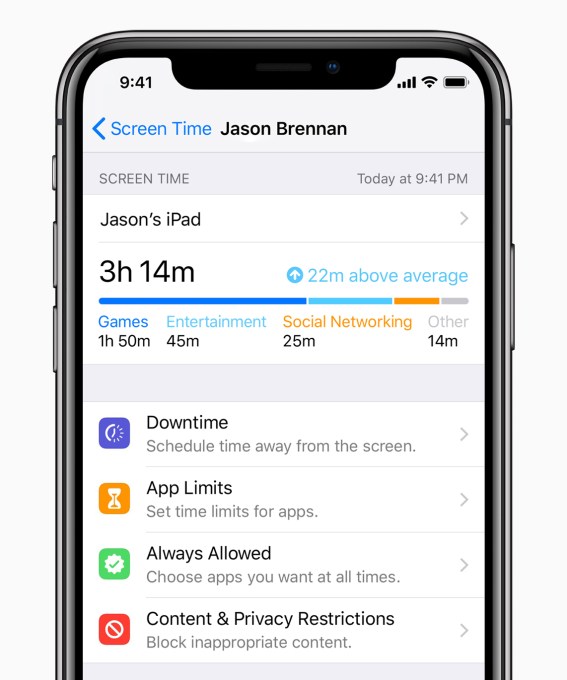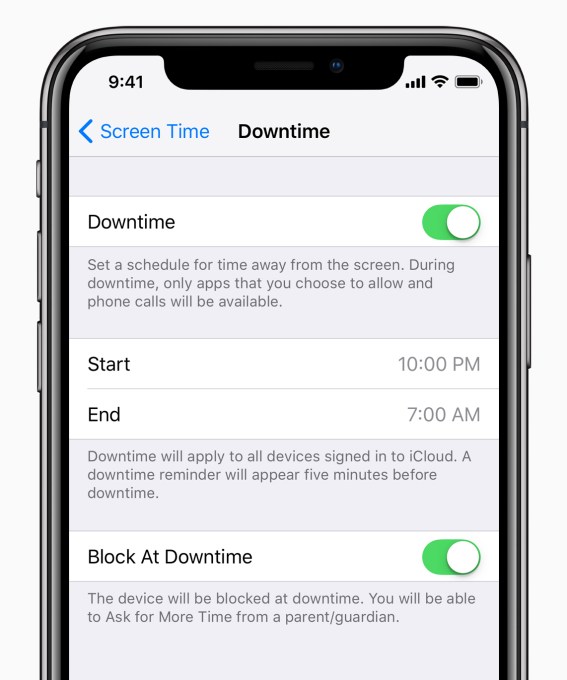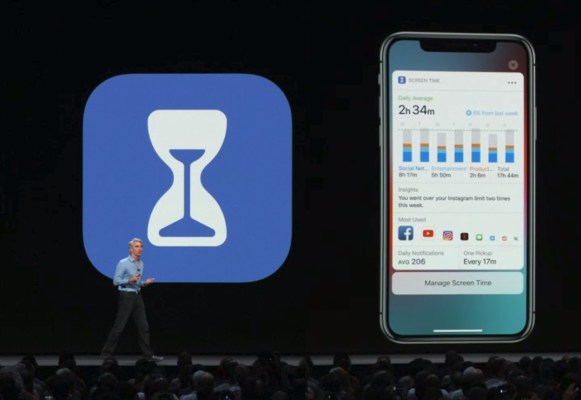Apple this morning announced a new set of parental controls for iOS devices at its WorldWide Developer Conference this morning in San Jose. The company had already acknowledged back in January that it had new, more robust parental control features in the works, following an open letter posted by two large Apple shareholder groups, Jana Partners LLC and the California State Teachers’ Retirement System.
The letter from the influential, activist shareholders mentioned recent research from child development experts whose studies have found links between the use of electronic devices by kids, and negative effects on concentration, emotional health, sleep and empathy. One study even found a link between time spent on devices and teen suicide, with teens who spent three or more hours per day on devices at higher risk than those who used them for an hour or less.
In addition, the letter argued that managing children’s device usage isn’t just the parents’ responsibility alone – they also need help from tech companies on the matter.
The shareholders suggested Apple task an executive to focus on these digital wellbeing features aimed at children and parents, and include new setup menus in Apple software that better allow parents to tailor the functionality of the device to the child’s specific ages.
Apple responded by saying updated parental controls were coming, and it rolled out a “Families” page on its website with educational materials for parents.
The company today unveiled for the first time what these new controls would look like, and how they work.
Now, there’s a new weekly activity report for parents and kids that shows how much time is spent using the device and the apps, and parents will have the option of creating screen time allowances for kids.

Another “Downtime” option will help kids to unplug, and parents can limit app usage by category or individual whitelisted apps. That way, parents can make sure critical apps will still work even during downtime, like the Phone app, or those that are educational, like Books.

During Downtime, notifications from apps aren’t displayed, and a badge appears on apps so kids know they can’t currently be used.
Another Screen Time limit lets parents block off time when the device can’t be used at all, like around bedtime. This feature works with Family Sharing.
 Currently, Apple’s existing set of parental controls on iOS (found under General –> Restrictions) in iOS takes an all-or-nothing approach, where parents toggle on or off Apple’s own apps, configure which apps, music, books, and videos can see based on their ratings. They can also configure various privacy settings related to things like location sharing, advertising, speech recognition, and many others. And parents can configure what the child can or cannot do on the device – like download apps or disable “Do Not Disturb While Driving,” for example.
Currently, Apple’s existing set of parental controls on iOS (found under General –> Restrictions) in iOS takes an all-or-nothing approach, where parents toggle on or off Apple’s own apps, configure which apps, music, books, and videos can see based on their ratings. They can also configure various privacy settings related to things like location sharing, advertising, speech recognition, and many others. And parents can configure what the child can or cannot do on the device – like download apps or disable “Do Not Disturb While Driving,” for example.
Meanwhile, other tech companies’ parental control systems have evolved to include more functionality related to screen time.
Amazon, for example, offers controls that allow parents to set educational goals that must be met before games can be played, and allows for setting time limits and filtering of content by age. Google’s Family Link, which publicly launched last fall, also focuses on screen time settings.
With the new controls, Apple is playing catch up a bit to an industry that had already made screen time and age filters a key focus. But it’s still an important step, given Apple’s power to set trends.
The addition of the new parental controls is part of Apple’s larger focus on digital wellness, which includes the arrival of new time management features for adults, as well, arriving in iOS 12.

